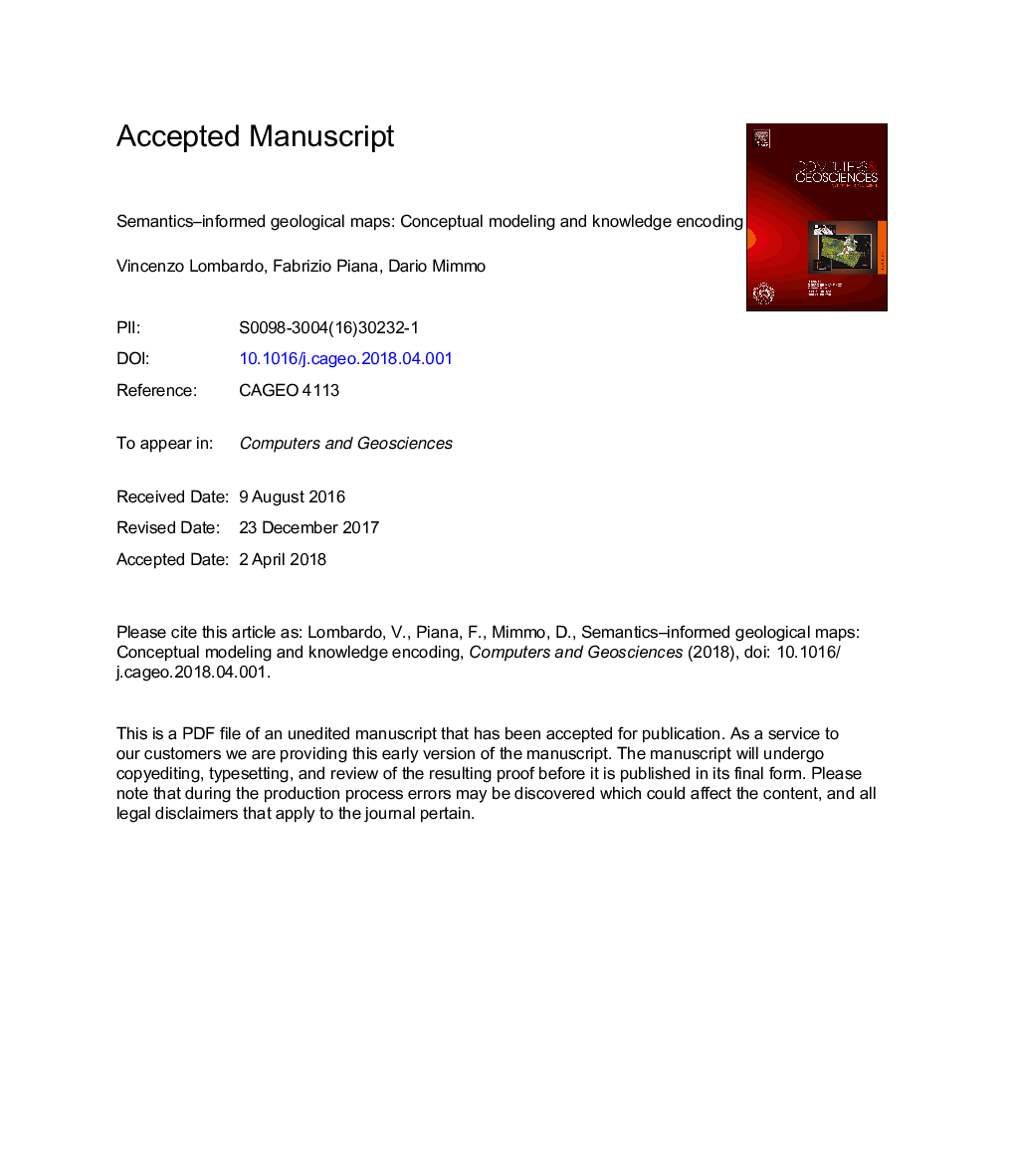| Article ID | Journal | Published Year | Pages | File Type |
|---|---|---|---|---|
| 6922106 | Computers & Geosciences | 2018 | 30 Pages |
Abstract
This paper introduces a novel, semantics-informed geologic mapping process, whose application domain is the production of a synthetic geologic map of a large administrative region. A number of approaches concerning the expression of geologic knowledge through UML schemata and ontologies have been around for more than a decade. These approaches have yielded resources that concern specific domains, such as, e.g., lithology. We develop a conceptual model that aims at building a digital encoding of several domains of geologic knowledge, in order to support the interoperability of the sources. We apply the devised terminological base to the classification of the elements of a geologic map of the Italian Western Alps and northern Apennines (Piemonte region). The digitally encoded knowledge base is a merged set of ontologies, called OntoGeonous. The encoding process identifies the objects of the semantic encoding, the geologic units, gathers the relevant information about such objects from authoritative resources, such as GeoSciML (giving priority to the application schemata reported in the INSPIRE Encoding Cookbook), and expresses the statements by means of axioms encoded in the Web Ontology Language (OWL). To support interoperability, OntoGeonous interlinks the general concepts by referring to the upper part level of ontology SWEET (developed by NASA), and imports knowledge that is already encoded in ontological format (e.g., ontology Simple Lithology). Machine-readable knowledge allows for consistency checking and for classification of the geological map data through algorithms of automatic reasoning.
Related Topics
Physical Sciences and Engineering
Computer Science
Computer Science Applications
Authors
Vincenzo Lombardo, Fabrizio Piana, Dario Mimmo,
